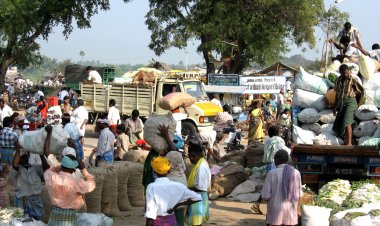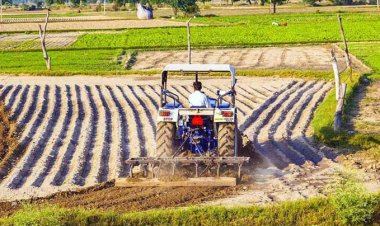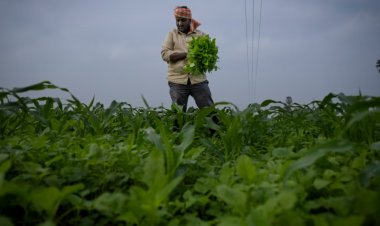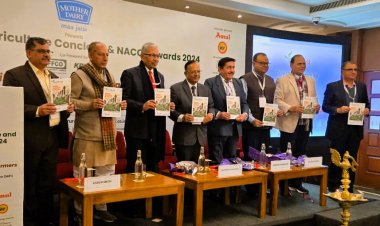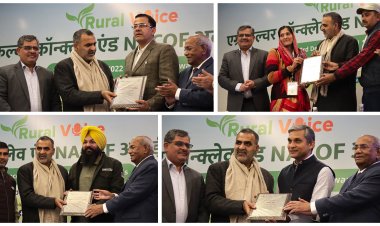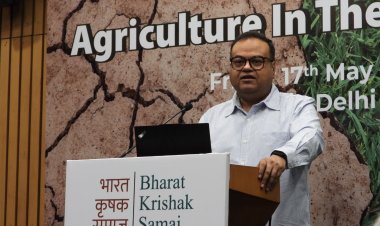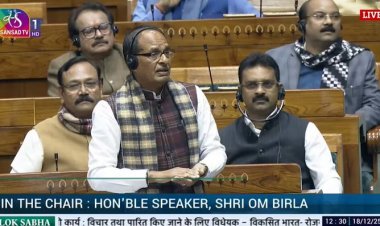Time to shift to Climate Resistant Agriculture; ICAR template needs fast follow-up
One of the most important recommendations was whether the crop cycle can be tweaked in view of the changes and rise in temperatures in March when wheat is about to be harvested. Simply put, whether the sowing-to-harvest cycle can be advanced by a few weeks in the face of climate change.
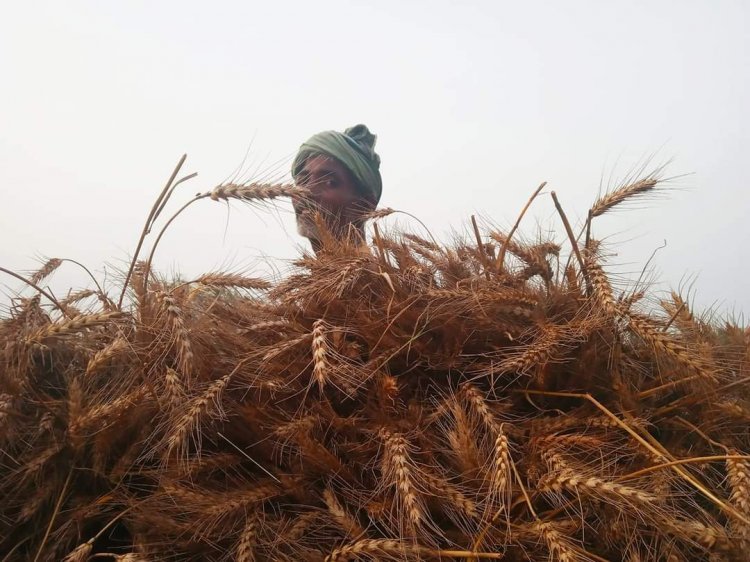
For farmers in Punjab and Haryana, the major wheat-growing states of India, it was all going very well till the beginning of March 2022. They were expecting a bumper harvest as the crop had largely been spared of any adverse rains or hailstorms which carry the risk of damage to the ripe or near-ripe grain. But extraordinary heat conditions in these states dashed the hopes of these farmers.
By the time the wheat landed in the mandis, the grain was shrivelled to the extent of even 15-20 per cent. The yield per acre, according to the farmers, had dropped by 20-40 per cent, depending on the particular district. The official estimates of the damage have not yet been available; neither has any promise been made or compensation announced under the crop insurance schemes. One hopes farmers who have suffered the losses are paid at least some compensation.
The main point of discussion of this article relates to the apathy to a well-documented comprehensive study that almost took eight years to complete. The Indian Council of Agricultural Research (ICAR) had embarked upon a major project in 2011 which was completed in two phases by 2019. The first one called the National Initiative on Climate Resilient Agriculture (NICRA) was completed in 2017; the follow-up was named National Innovations in Climate Resilient Agriculture (also NICRA). The two-volume comprehensive report was mentioned in a Parliamentary question last year along with the link of the full text. One of the most important recommendations was whether the crop cycle can be tweaked in view of the changes and rise in temperatures in March when wheat is about to be harvested. Simply put, whether the sowing-to-harvest cycle can be advanced by a few weeks in the face of climate change.

The entire report may be clicked on the following link:
“Climate change projections indicate a rise in temperature with more certainty and it is the minimum (night) temperature that is rising more than the maximum temperature. Heat stress/or rising temperature is emerging as an important factor in determining crop yields and has not received as much attention as the rainfall deficits did in the Indian context. This analysis shows that (a) rise in minimum temperature is the most significant factor in determining risk in 271 districts. The impact of rising minimum temperature or warmer nights in Rabi crops like wheat is evident from many studies,'' the NICRA study pointed out.
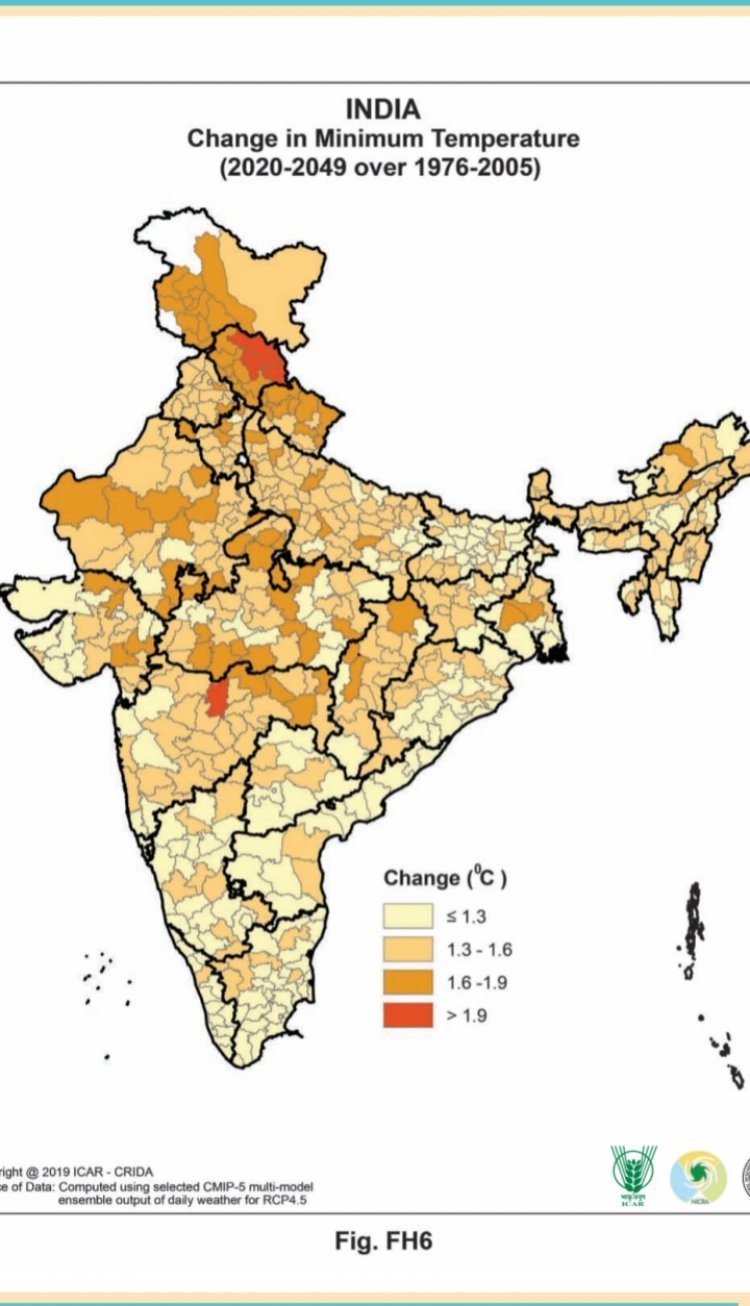
The next recommendation is even more telling: “Some of the desirable interventions in this regard are advancing sowing dates, adoption of short-duration varieties, etc.” If only this recommendation was adhered to in earnest by the Centre and the states in a cohesive manner involving the important government organs like the weather department (IMD), the state and central agricultural universities and above all the ICAR, which had painstakingly carried out the NICRA project!
One only hopes that the report is now implemented with a sense of urgency. “There is emerging evidence that the productivity of crops, livestock and fish is likely to be affected with implications to food security, livelihoods and sustainability in agriculture. Both the changes in mean climate and the variability therein will affect (the) growth and productivity of crops and livestock. It can be broadly generalized that rising temperature and declining rainfall will adversely affect agricultural productivity, though there can be certain exceptions such as rising temperature in the temperate hill regions may help improve (the) productivity of crops. In India, several studies have projected declining crop yields, in the absence of adaptation, in response to changing climate characterized by rising temperature. The impacts of rising temperature on crop yields are stronger than (the) positive impacts of the rising atmospheric CO2 levels, the latter being referred to as the carbon fertilization effect. The negative effects of temperature on (the) farm revenue outweigh the smaller positive effects of increasing precipitation.”
The best thing about the NICRA project was that it had drawn upon a district-level analysis of the vulnerability of agriculture to climate change.
The likely scenario is as follows: We would see some start-ups spring up claiming to be tackling the climate change issue at the district level. In fact, a few of them have started doing so. We would all cheer up this great innovation and entrepreneurship of the start-ups, conveniently forgetting or rather overlooking that a voluminous NICRA report is stored in some digital files of the ICAR and the administrative ministry.
Let's wake up to the real threat of climate change. Words of wisdom of experts, as buried in the NICRA report, can be heard and implemented. Some of these are being reproduced here: ''Changes in temperature and rainfall patterns are the two most significant aspects of climate change in relation to agriculture. A rising temperature is evident from historical trends which further increases the importance of access to irrigation. Low access to irrigation, expressed in terms of per cent NSA with access to irrigation, emerged as the most prominent vulnerability-related driver of risk in 116 districts. Expansion, equitable access to and efficiency of irrigation have to receive more attention as part of any adaptation strategy. Harvesting rainwater, in situ conservation and groundwater recharge should be the three principal supply-side components of water management in rainfed areas. In both irrigated and rainfed areas, demand management for irrigation water holds key to more sustainable water use. This requires changes in cropping pattern as per the actual plans of irrigation projects on one hand and promotion of crops that require less water in rainfed regions on the other. Technologies (e.g., micro-irrigation), policies and other instruments have to be purposefully tailored together to suit different regions in this regard. Low annual rainfall was found to be an important source of risk in 91 districts.”
The number of days with abnormally high maximum temperature from March to May is expected to increase by more than one in 54 districts. A majority of these districts are in the Himalayan states of Jammu and Kashmir, Himachal Pradesh, Uttarakhand, north-eastern states and Punjab, the NICRA report placed in Parliament stated.

The report also mentioned that the climate change risk is ‘very high’ for 109 districts: Uttar Pradesh (22), Rajasthan (17), Bihar (10), Kerala (8), Uttarakhand (7), Odisha (6), Punjab (5), and the remaining in the states of West Bengal, Karnataka, Haryana, Gujarat, Mizoram, Assam, Himachal Pradesh, etc. Most of the 201 districts with ‘high’ risk are in Uttar Pradesh, Madhya Pradesh, Chhattisgarh, Karnataka, Rajasthan, Bihar, Odisha, Maharashtra, etc. These districts have to be given high priority while planning for measures for protecting agriculture and farmers from the adverse impacts of climate change.
(Prakash Chawla is a New Delhi-based independent journalist.)



 Join the RuralVoice whatsapp group
Join the RuralVoice whatsapp group

















